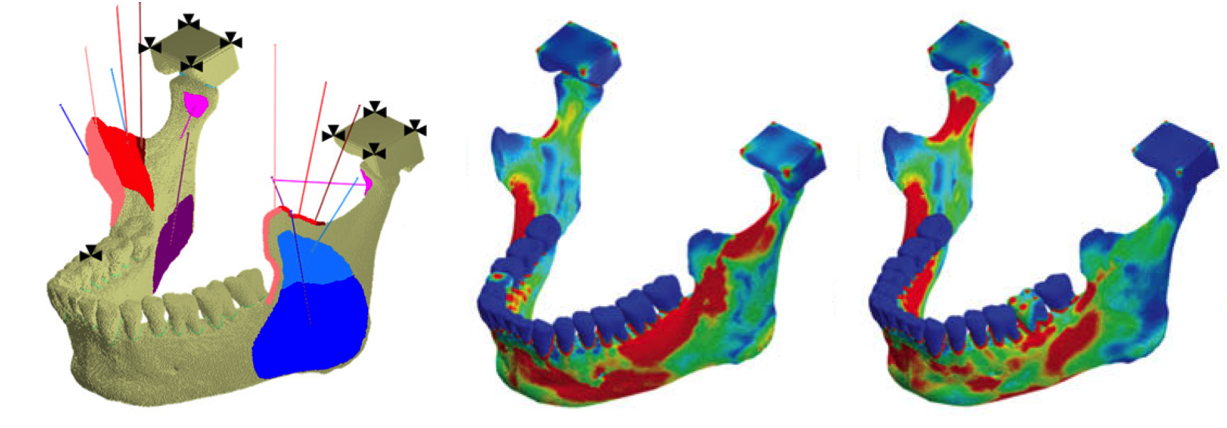Understanding how bones develop and respond to disease and the use of implants
Large scale voxel based modelling
eCSE01-015Key Personnel
PI/Co-I: Prof. Michael Fagan, Dr Richard Holbrey - The University of Hull
Technical: Mr Iain Bethune and Dr Neelofer Banglawala - EPCC, The University of Edinburgh
Relevant Documents
ARCHER White Paper: Voxel-based finite element modelling with VOX-FE2
eCSE Case Study: Understanding how bones develop and respond to disease and the use of implants
Project summary
Scientists at the University of Hull have developed their simulation software to utilise ARCHER to model complete bones or large sections of bones. This offers the exciting opportunity to model skeletal development and adaptation. The potential benefits are enormous, ranging from a better understanding of both the fundamental biomechanics of bone and the cause and effects of musculoskeletal conditions, to better implant design.

Computational Achievements
The modelling software VOX-FE2 has been developed and enhanced by EPCC and the University of Hull through a software development award from the ARCHER eCSE programme. As a result the software can now simulate bones at a sufficiently fine level of detail that their true structural behaviour can be represented. The software is now on average 3 times faster than before and can run on a much larger number of computer cores - over 512. Going to even larger core counts improves the speedup, with the code running a maximum of 30 times faster on very large core counts.
Financial Benefits
In the short term the scientists plan to carry out a series of studies on the human skull and proximal femur, with a high model resolution (~250 million elements). The performance improvements achieved with the code will save an estimated £63,000 on the cost of running these simulations. Longer term, these savings will continue to grow as the simulations increase in size and complexity.
Scientific Benefits
Bones have highly complex architectures that are individually optimized to the loads they experience. This new ability to model the fine details of their structures provides many exciting opportunities not only to understand more about fundamental bone biomechanics, but also to investigate bone diseases and to advance joint repair and replacement. In particular, this allows the following type of investigations:
- simulation of the development and growth of the femur and investigation of conditions such as Perthes' disease;
- simulation of the biomechanical effects of osteoporosis and response to increased exercise or drug treatments to rebuild bone;
- simulation of the response of bone to implants and their osseointegration, for example hip replacements and dental implants.
By understanding these conditions in more detail, the scientists have the potential to make a positive impact on many people's day-to-day lives.






